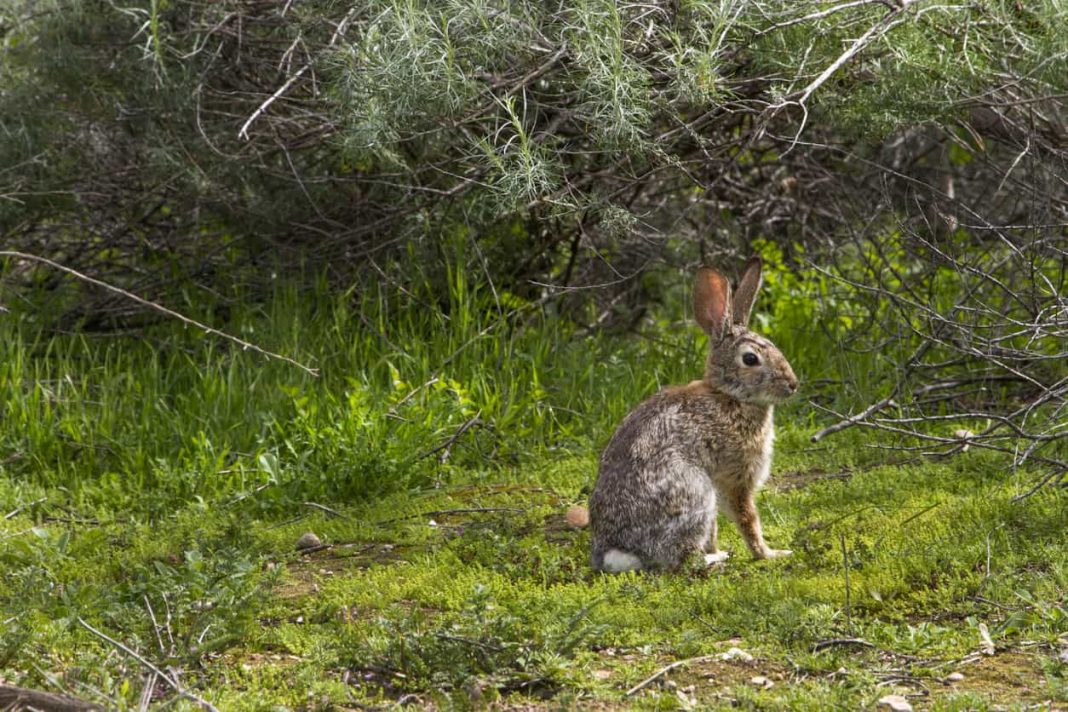As we move into late spring/early summer here in Southeast Texas, it is important to remember that for many wildlife animals, it is still baby season. Early in the year (January through March), squirrels, opossums, rabbits, and the larger birds of prey are busy nesting and raising their young. As the year progresses, more babies make their appearances. The timing for each species varies some depending on weather conditions, but by March, April, and May, we generally start to see raccoons, fawns, songbirds, and smaller birds of prey raising their young, and then in late spring/early summer the skunks and armadillos will come along. Since our weather is very temperate here, songbirds often nest and raise two or three broods of young each year. Learning to recognize normal behavior versus when wildlife babies may need rescuing is vitally important. Here are some important guidelines:
- Rabbits will breed from early in the year throughout the warmer months. Their breeding often follows very wet weather (a lot of rain means lots of grasses and weeds, which is what they eat). Female rabbits spend very little time at their nest, as little as just a few minutes twice a day to nurse their young, so people often assume babies are abandoned. If you come upon a nest of baby rabbits, please leave them alone and call a rehabber or rehab center for guidance. Even if the nest is discovered by your pet dog or cat, there are sometimes ways to protect the nest so the mother rabbit can still care for the young. Baby rabbits are extremely difficult to rehabilitate as they have such specific digestive requirements, so leaving them to be raised by their wild mother is their best chance of survival.
- Raccoons love to den in hollow trees, under buildings or sheds, in woodpiles, etc. Unfortunately, they also sometimes get into people’s attics or outbuildings during baby season. Please do not set live traps if you have a raccoon in your attic or outbuilding. It is heartbreaking when people trap and relocate a female raccoon only to discover days later that they have inadvertently left orphaned babies behind. There are humane ways to encourage the mom to move out and take her babies with her, or in extreme situations to have a humane company come out to exclude mom from the space and put the babies in a reunion box for her to reclaim. If you happen to find a raccoon kit, it is possible the mother will still come back for it. Remember, if she perceives her den spot is no longer safe, she will move her babies; but she can only move one kit at a time. This month’s article includes a helpful flowchart with instructions about how to facilitate reuniting a mother raccoon with her kit(s). Raccoon kits require up to 7 or 8 months of rehabilitative care prior to release, so that drastically limits how many animals any particular rehabber or rehab center can accommodate.
- If you happen to find a young or juvenile bird of prey (owl or hawk), please call us for assistance. Depending on the age of the baby, we can help assess how to best help. As with all birds, young owls and hawks will leave their nest when they are LEARNING to fly, not when they CAN fly. So fledgling birds do not necessarily need rescuing. Even in the case of nestling raptors, they can sometimes be re-nested if they have fallen.
- Fledgling songbirds are also frequently “rescued” unnecessarily. Baby birds that are fully feathered, have a stubby tail, and can hop and flit around a little are fledglings and they do not need rescuing. They simply need a few days to learn to fly while their parents are still tending to them.
- Fawns…almost always the correct thing to do is to LEAVE THEM ALONE. Mother deer leave their fawns unattended for hours at a time; this is to protect the fawn. Fawns have no natural scent, so the mother stays away to keep predators from finding her baby. A normal, healthy fawn will lay curled up, almost motionless, waiting for its mother to return. Danger signs would be a fawn that is lying on its side, legs stretched out, or a fawn that is constantly running and crying. If you have any concerns, please call for advice and guidance before touching or moving any fawn you might find. If you find a fawn in a dangerous location, it can be moved to a safer location close to where originally found. This month’s article also has a helpful flowchart about rescuing fawns.
To learn more about what we do and view pictures of many of the animals we assist, please visit our Facebook page at www.facebook.com/SavingTexasWildlife. Details and specifies-specific flowcharts can be found on our website www.ftwl.org. These charts are extremely helpful to determine if an animal truly needs rescuing or not. Our educational programs, including camps and Second Saturdays, have resumed using our outdoor classroom space. Our educational visitor’s center is open the second Saturday of each month from 10 a.m. to 2 p.m., located at 29816 Dobbin Hufsmith Road, Magnolia, Texas, so the next open house date will be Saturday, April 10 ($5 per person, kids under 2 free). Details about summer camps will be posted soon on our website.

















